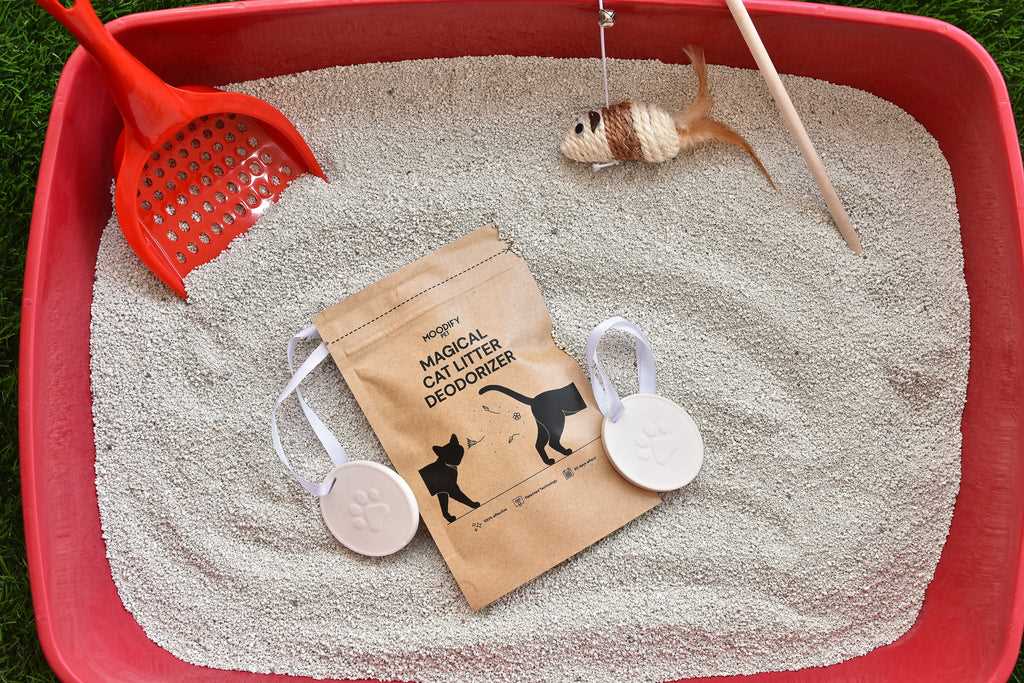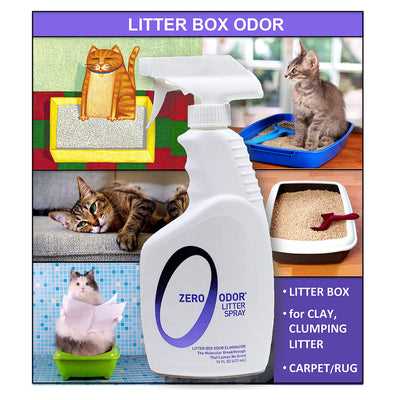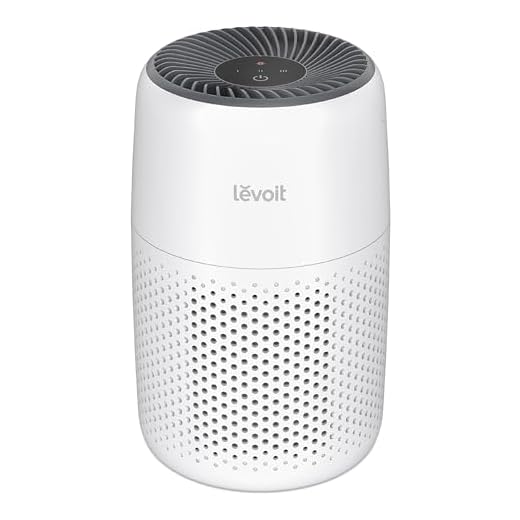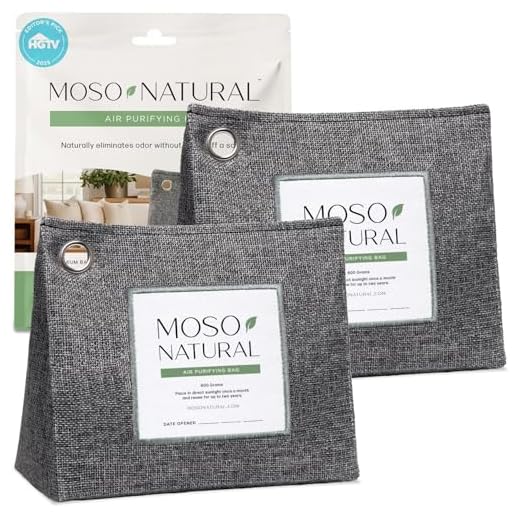



Using baking soda is a game-changer. Sprinkle a generous amount over the area and let it sit for at least 15 minutes before sweeping or vacuuming it up. This natural deodorizer absorbs unwanted scents effectively.
Consider switching to clumping substrates. These materials trap moisture and odors more efficiently than traditional options. Look for brands that advertise superior odor control to keep your environment fresher.
Regularly clean the box itself with a mixture of vinegar and water. This solution neutralizes odors and helps maintain hygiene. Rinse thoroughly afterward to ensure no residue remains.
Incorporating air purifiers equipped with activated carbon filters can significantly enhance air quality. These devices capture and eliminate volatile compounds, ensuring a fresher atmosphere throughout your home.
Lastly, maintaining a consistent cleaning schedule is essential. Daily scooping prevents buildup and minimizes unpleasant scents, keeping your space comfortable for everyone.
Quick Solutions for Unpleasant Odors
First, I suggest using baking soda. Sprinkling it over the substrate absorbs odors effectively. Let it sit for a few hours before cleaning.
Next, consider activated charcoal. Placing a small bowl of it near the box neutralizes unpleasant scents quickly.
Regular cleaning is a must. Scoop out waste daily and replace the substrate weekly. This routine keeps things fresh.
Try using a high-quality, clumping substrate. These types minimize lingering odors and make cleanup easier.
Ventilation is key. Keep the area well-aired by opening windows or using fans. Fresh air helps reduce unpleasantness.
Essential oils can also assist. A few drops of pet-safe oils, like lavender, on a cotton ball placed nearby can create a pleasant atmosphere.
Lastly, consider an air purifier. These devices filter out unwanted particles and circulate clean air, enhancing the overall environment.
Choosing the Right Cat Litter to Minimize Odor
Opt for clumping varieties. They trap moisture and odors effectively, making cleanup easier. Look for litters made from natural materials like corn or wheat, as they often offer better absorption than traditional clay options.
Consider silica gel crystals. These absorb moisture without clumping and are less likely to retain unpleasant scents. They require less frequent changes, which helps maintain a fresher environment.
Watch for Additives

Avoid litters with strong fragrances. While they might mask odors temporarily, they can irritate sensitive noses. Instead, seek options with natural deodorizers like baking soda or activated charcoal.
Test Different Brands
Every feline has unique preferences, so experimenting with various brands is key. Observe how well each type controls odors and consider your own comfort during cleanup. Finding the right match can lead to a happier home for both of us.
Regular Cleaning Routines for the Litter Box
For a fresh space, scoop daily. This simple act prevents odors from accumulating. Use a dedicated scoop to ensure thorough removal of waste. Aim for at least once a day, especially after meals.
Weekly deep cleans are crucial. Empty the entire box, wash it with mild soap and water, and rinse thoroughly. This prevents residue buildup that can cause unpleasant scents. Make sure to dry it completely before refilling with fresh substrate.
- Consider using a liner to make cleaning easier.
- Replace the entire contents monthly to maintain freshness.
- Use a separate, designated container for waste disposal to minimize odors in your home.
Incorporate a sprinkle of baking soda into the substrate. It neutralizes odors effectively without harmful chemicals. Just a thin layer on top does the trick.
Pay attention to the box’s location. Keep it in a well-ventilated area to ensure air circulation. Avoid placing it near food or water bowls to enhance hygiene.
Monitor for any signs of discomfort or refusal to use the box, as this might indicate a need for more frequent cleaning or a change in routine. A clean environment promotes good habits and a happy feline.
Using Odor Neutralizers and Deodorizers

For immediate relief from unpleasant odors, I recommend trying enzymatic cleaners. These products work by breaking down organic waste and neutralizing lingering scents. Look for options specifically designed for pet areas to ensure effectiveness.
Baking soda is another excellent option. Sprinkle it generously on the litter before mixing it in. It absorbs moisture and odors, making the environment fresher. You can even create a DIY deodorizer by mixing baking soda with essential oils, just ensure the oils are safe for pets.
Activated charcoal is a powerful odor absorber. Place a small bowl of activated charcoal near the litter box. It works silently to eliminate unpleasant fragrances, providing a more pleasant atmosphere.
Aromatic sprays can also help. Choose those made from natural ingredients that eliminate odors without harmful chemicals. A quick spray around the box can instantly enhance the air quality in the space.
Commercially available deodorizers specifically for pet areas come in various forms, such as powders, sprays, or granules. Choose one that suits your preferences and apply it regularly to maintain a fresh environment.
Improving Ventilation in the Litter Area
Open windows whenever possible. Fresh air circulation helps dissipate odors quickly.
Consider installing a small fan near the box. This will promote airflow and push stale air out.
Use air purifiers with HEPA filters to capture particles and neutralize unpleasant scents.
Keep the area around the box clutter-free. Reducing obstructions allows air to flow more freely.
Place the box in a room with good air circulation, avoiding enclosed spaces.
Regularly check and clean vents to ensure no buildup restricts airflow.
Consider using exhaust fans in the room to continuously remove odors while maintaining fresh air.
Incorporate plants that are known for air purification, such as peace lilies or spider plants, to enhance air quality.
Monitor humidity levels; using a dehumidifier can reduce musty odors that linger in the air.
Establish a routine to periodically air out the space by removing the box and letting it breathe. This can reduce any lingering scents significantly.
Natural Remedies to Combat Cat Litter Odor
Sprinkle baking soda over the substrate to absorb unpleasant odors. It neutralizes acidity and keeps things fresh. Just a thin layer will do the trick!
Use white vinegar mixed with water as a cleaning solution. Spray it inside the box and wipe it down regularly. This natural disinfectant eliminates bacteria and helps in odor control.
Activated charcoal is another powerful agent. Place a small bowl of it near the box. It attracts and traps odors, creating a more pleasant environment.
Essential oils, like lavender or eucalyptus, can mask odors effectively. Add a few drops to cotton balls and place them around the area. Be cautious; ensure they are safe for pets and avoid direct contact with the substrate.
Fresh herbs, such as rosemary or mint, can also be helpful. Place some dried herbs in a sachet nearby to naturally scent the area while keeping it fresh.
| Natural Remedial Item | Purpose |
|---|---|
| Baking Soda | Absorbs odors |
| White Vinegar | Cleans and disinfects |
| Activated Charcoal | Traps odors |
| Essential Oils | Masking scent |
| Fresh Herbs | Natural fragrance |
Regularly changing the substrate and maintaining cleanliness are key. Combine these natural remedies for a fresher atmosphere!
When to Replace Cat Litter and Clean the Box
Replace the contents of the box at least once a week. If you notice an increase in odor or your human complains about unpleasant scents, it’s time for a change. Even the best products need regular refreshing.
Signs It’s Time for a Change
If you observe clumping issues or the litter seems to lose its absorbing ability, consider switching it out sooner. Additionally, if you spot any waste that hasn’t been covered properly, that’s a clear indicator for a thorough clean.
Cleaning Routine
Daily scooping is a must. Removing waste promptly helps keep the area fresh. Once a week, dump all used material, scrub the box with mild soap and water, and dry it thoroughly before adding new litter. A clean box not only helps with unpleasant odors but also encourages me to use it regularly.
Feeding me the right food also plays a role in maintaining freshness. For quality nutrition, check out this dry kitten food for indoor cats.
Lastly, if you want to enjoy nature while keeping an eye on my litter habits, consider investing in the best binoculars with digital camera. It’s a fun way to combine observation with care!
FAQ:
What are some quick methods to eliminate cat litter smell?
One effective way to neutralize cat litter odor quickly is to sprinkle baking soda over the litter box before adding fresh litter. Baking soda absorbs odors and helps keep the area smelling fresh. Additionally, consider using a high-quality clumping litter, which can trap odors more effectively than non-clumping types. Regularly scooping the litter box at least once a day is also crucial, as it prevents waste from accumulating and causing stronger smells. If the smell persists, try placing an air purifier nearby or using odor-neutralizing sprays specifically designed for pet environments.
How often should I clean the litter box to control odors?
To maintain a pleasant environment and control odors, it’s recommended to clean the litter box at least once a day. This involves scooping out clumps of waste and any soiled litter. Once a week, you should do a deeper clean by emptying the entire box, washing it with warm water and mild soap, and replacing it with fresh litter. If you have multiple cats, you might need to clean the litter box more frequently to manage odors effectively. Additionally, placing the litter box in a well-ventilated area can help reduce smells as well.











